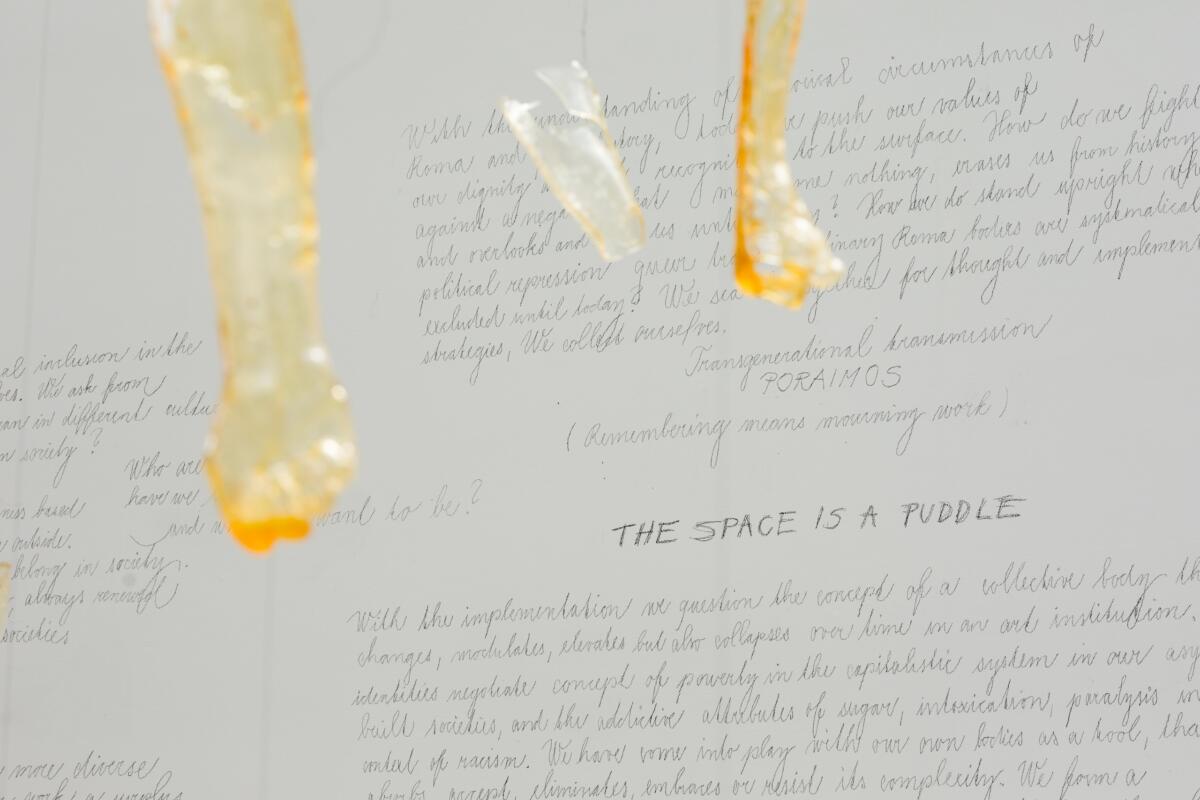
This is plate
This is a cup
This is a story I didn’t make up
Grace Jones, This Is, from the album Hurricane, 2007
The identification of the link between the “uncivilized” at home and the “uncivilized” abroad is of critical importance in overcoming the stultifying notion that Europe had and has a hold on the production of knowledge. The critique of Eurocentrism should start from within Europe itself.
Teshale Tibebu, Hegel and the Third World: The Making of Eurocentrism in World History, 2011[1]
Africa trades mainly with the countries of Western Europe, North America and Japan. Africa is also diversifying its trade by dealing with socialist countries, and if that trade proves disadvantageous to the African economy, then the developed socialist countries will also have joined the ranks of the exploiters of Africa. However, it is very essential at this stage to draw a clear distinction between the capitalist countries and the socialist ones, because socialist countries have never at any time owned any part of the African continent.
Walter Rodney, How Europe Underdeveloped Africa, 1972[2]
Intro
I have been waiting for the second edition of Prague’s Biennale Matter of Art since the early announcement calling for situating the decolonial discourse within the context of Eastern Europe[3]. For me, encounters with decolonial struggles are important. They allow me to remember the knowledges, cultures, and peoples that are threatened by majoritarian national culture, where I am coming from. They aid in understanding an experience of hurried adaptation to neoliberal reality in Poland in juxtaposition to an experience of rapid industrialization and socialism that was lived by my parents, to an experience of peasantry and illiteracy lived by my grandparents. As much as Eastern Europe is not a monolith, it differs from the West in the sense of its historical discontinuity[4] and the scale of violence absorbed by these lands.[5]
I have been steadily startled that decolonial discourse seems to be “arriving” to Eastern Europe from the West. As if people of these lands were not settlers, explorers and missionaries; as if comradeship with decolonial struggles was not a part of the public discourse during socialist states. I have been waiting for the Biennale Matter of Art to search for a path leading to another past, present, and future of Europe. The one striving for an other than colonial relationships within itself and beyond.
The exhibition curated by Rado Ištok, Renan Laru-an, Piotr Sikora and transit.cz incorporates artworks situated on the antipodes of political commitment, presenting often irreconcilable perspectives. As such it seems to be a reflection of the dissensus triggered by the recomposition of colonial grammar within Eastern Europe.[6] Nevertheless a path allowing for grounding, waking, and spelling for different life can be found within the exhibition. A path leading through profound sadness. How to live with a wound, knowing there is no cure, is a question I carry with me after visiting Prague this summer.

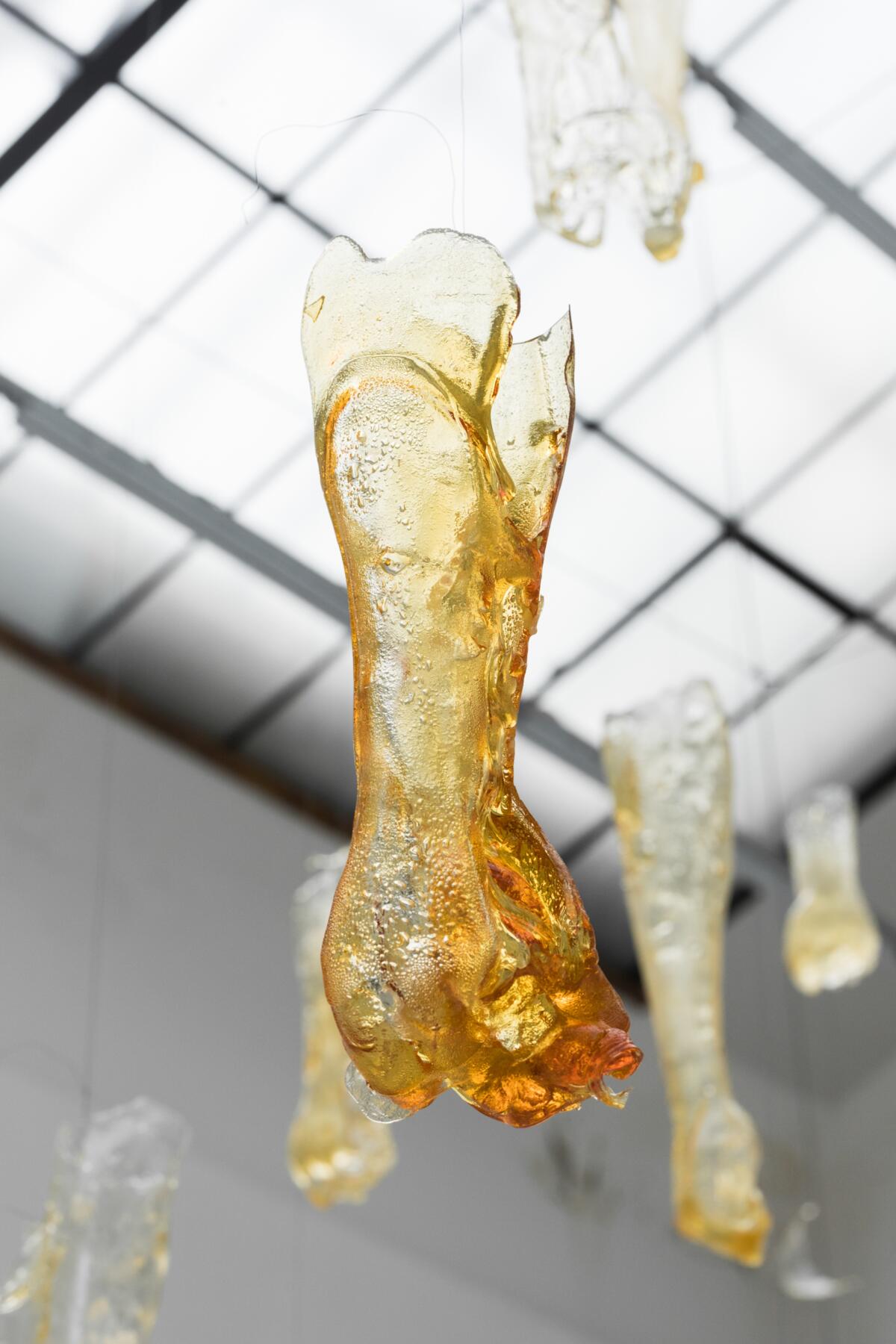
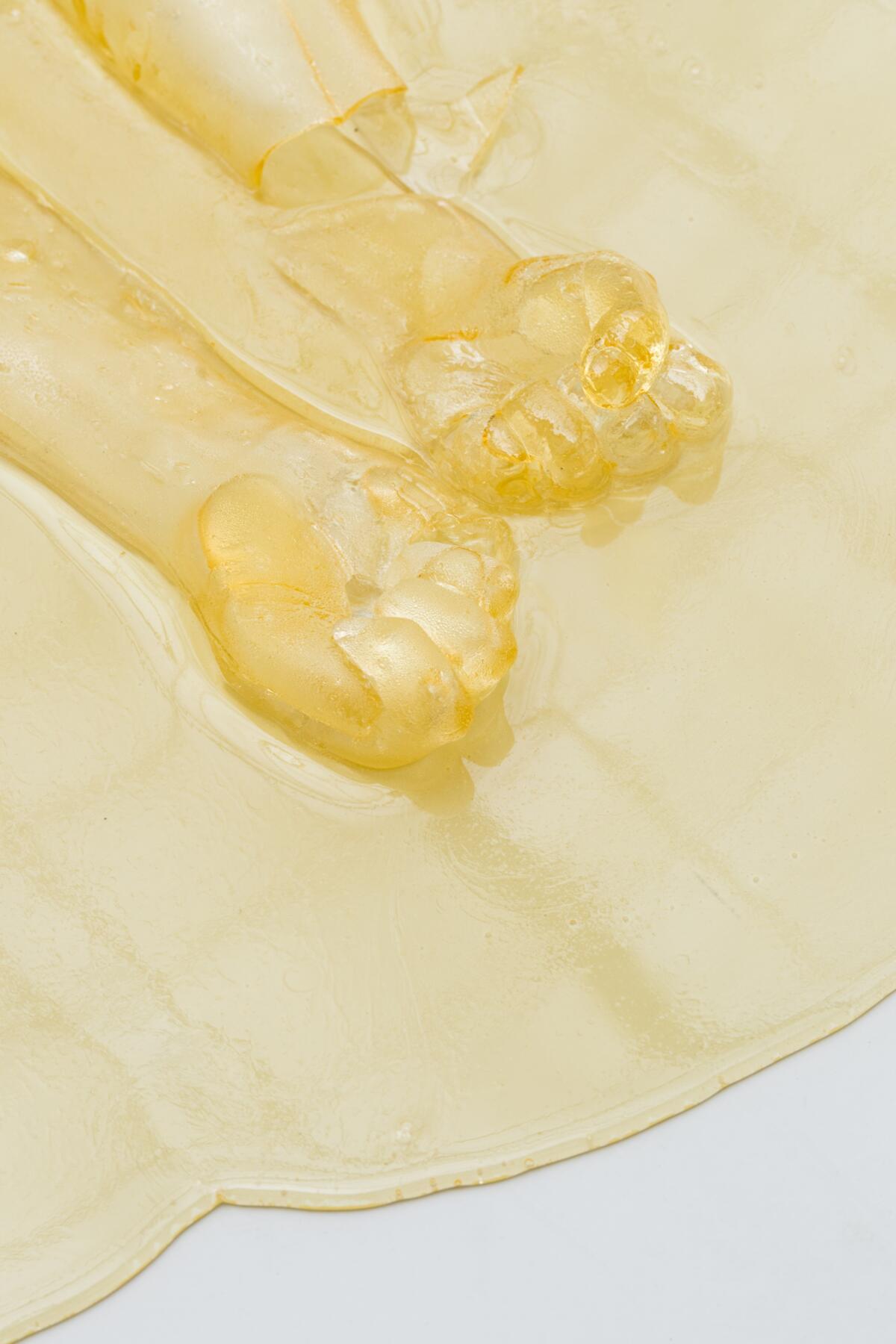
Grounding
A swarm of semi-transparent arms fills the space of Saloun Studio, illuminated by sunlight. Most hang from the ceiling, their clenched fists aimed in various directions, evoking affective registers of a closed hand. Triumph, punch, resistance, helplessness. Some of them fell on the floor and broke into pieces resembling glass. Yet they are made of sugar. They are sticky, sweet and fragile. The installation Mould Mix Melt Stir Break Pinch SUGAR Repeat *Receipt Against Racism by Robert Gabris and Ľuboš Kotlár is a space-making gesture. Stickiness, sweetness and fragility activates memories of a tongue asking a visitor to examine their sense of boundaries. Gluey fingers, thickened saliva, fear of broken glass.
The ecovative powers of sugar are decisive for the performativity of the installation. Allowing it to be tasted without being touched, the artwork elicits what is absent. The political economy of sugar is a history of sweat. The history of sweet is a history of salt–of the human body, of the ocean and sea, of the land. The poetic transformation of the commodity manifests the totality of violence interdependent on a desire for uninterrupted consumption. Yet the work does not obey the methods of historical materialism. Sugar is not rendered to be a resource, it is an active presence of inseparable, yet different realities shaped by European racism.
The evocation allows Robert Gabris and Ľuboš Kotlár to situate their experiences of Roma and Queer bodies within the European space and within political economy of sweet. In a statement handwritten on the wall, the artists ask: So is a safe space a dangerous space where you have to give up everything you have? Situating the question of safety is a grounding gesture to reflect on European space as the one posing a threat. A threat of security management, which renders safety to be an interruption in a continuous deployment of violence.

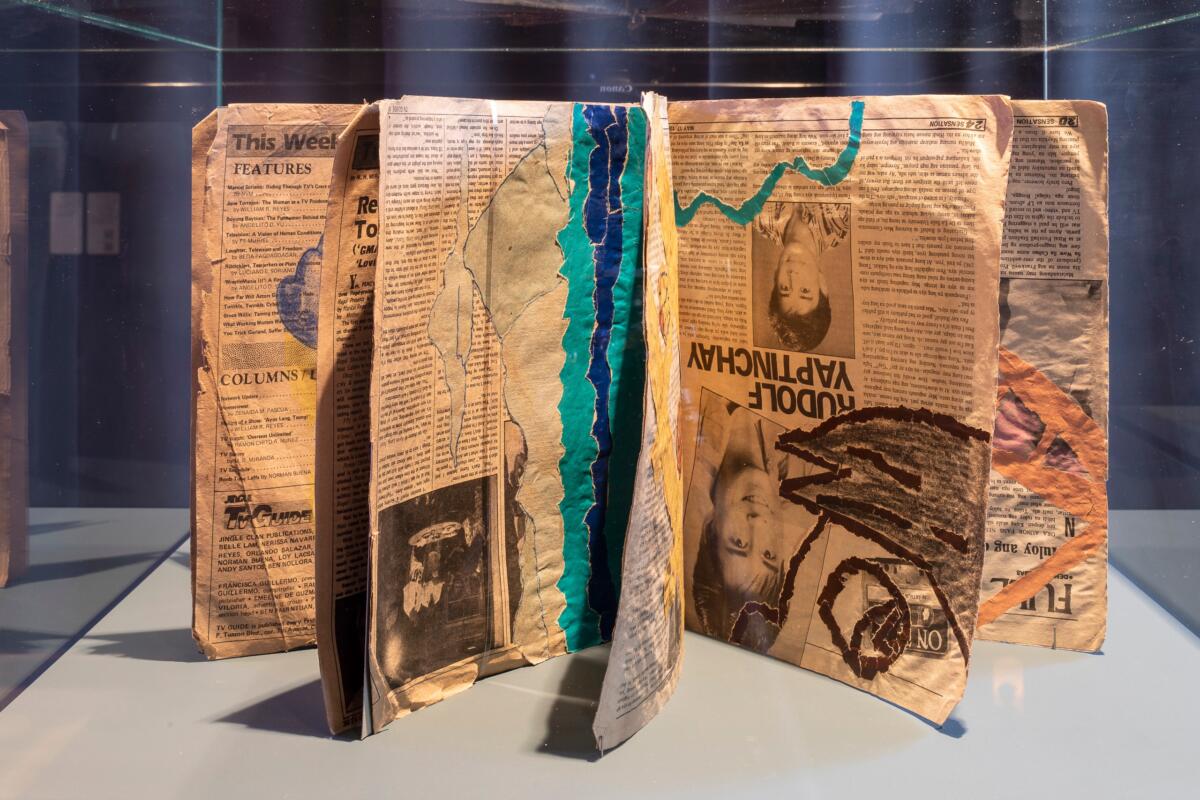
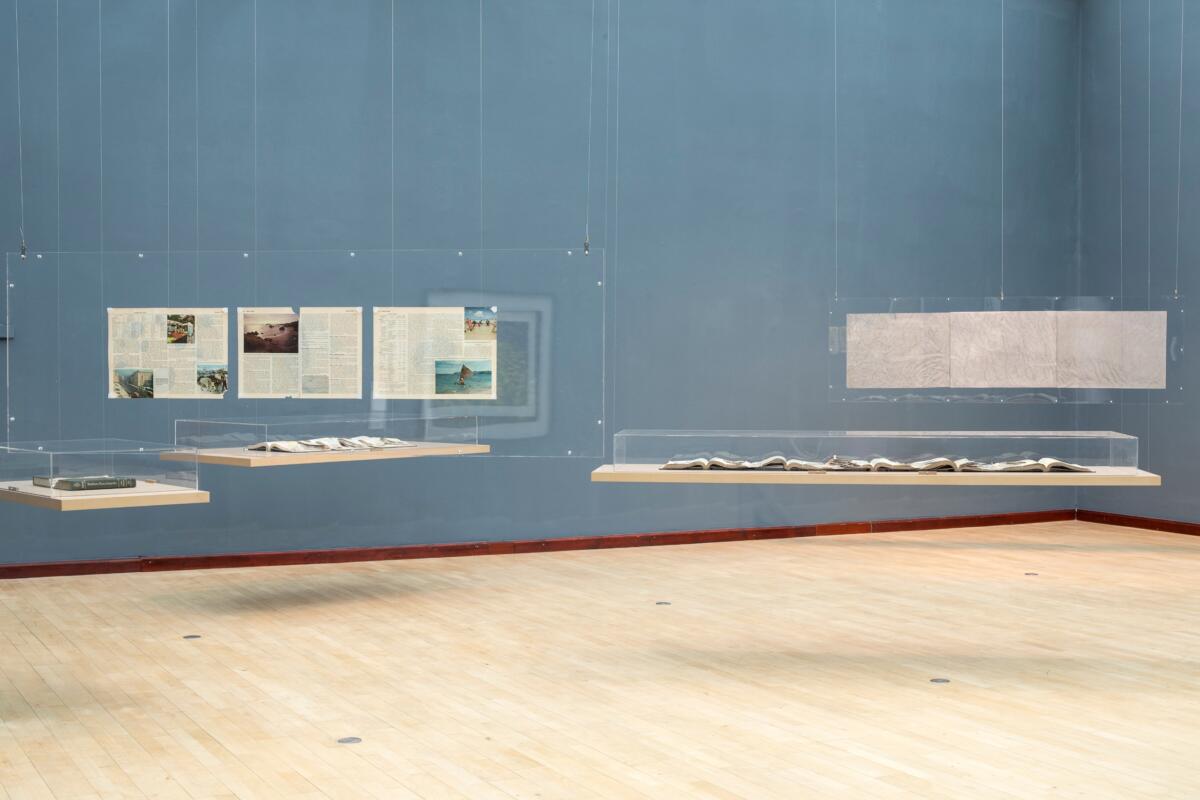
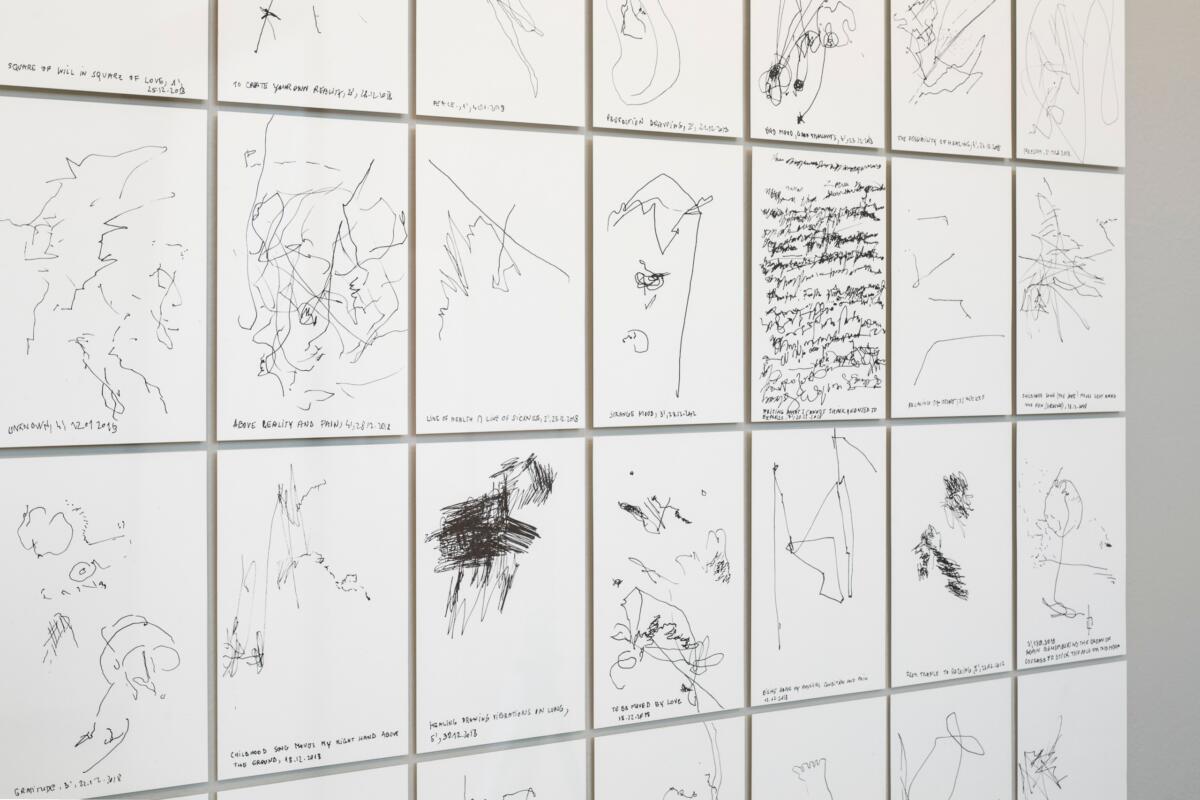
Waking
To keep one’s feet on the ground for too long sometimes means to fall asleep. To stay in a dream sometimes is to wake. Spaces of suspension encompass the biennale, interrupting separations between fantastic visions and political commitments, juvenile longings and commandements of adulthood. The presence of Filipino playwright and children’s literature author Rene O. Villanueva is summoned through book-like objects. They were created during storytelling workshops he conducted among different communities in the Philippines. These non-literary artifacts are vessels carrying stories told through generations. They un-write these legends into collages made of cut-outs of colorful magazines, volatile prints and newspapers. Un-writing the lethal authority of literacy emphasizes the political dimension of ever-changing fabulation. To tell a story differently each time is to nourish a world that is susceptible to change.
Another book-like object is a part of the unfinished project Landworks, by Filipino artist Renz Lee. An atlas–a book of maps and charts, a literary rendering of the land, is meticulously cut and transformed. On one spread the Pacific Ocean is methodologically carved out of pages destabilizing the modality of cartographic comprehension. The gesture of removal, erasing from the map does more than exposing the violence of alienating discourse of geopolitics. It is an attempt to recover the land, an intervention in the reality in which the book holds power and promises, lending it to those who can read it. As an object of might a book is a magical device, a technology of “causing Change to occur in conformity with Will”[7]. The act of carving the Pacific Ocean out of the book is an act of casting a spell. A spell of transportation, outside the domain of geopolitical wizardry.
If sorcery is a practice of exercising will it belongs no less to the realm of politics and science then to the world of fantasy. An ambient presence of works by Romanian artists Alina Popa and Florin Flueras introduces their practice of unsorcery, a practice committed to undoing contemporary realities and subjectivities. Their ephemeral pieces, such as Undreaming or Heal the Line, create an environment situated at the crossroads between invisible, inaudible, and intactile worlds while inviting to sense them nevertheless. If dreaming is how reality appears, to wake is to practice another world–to undream the one we came to know.

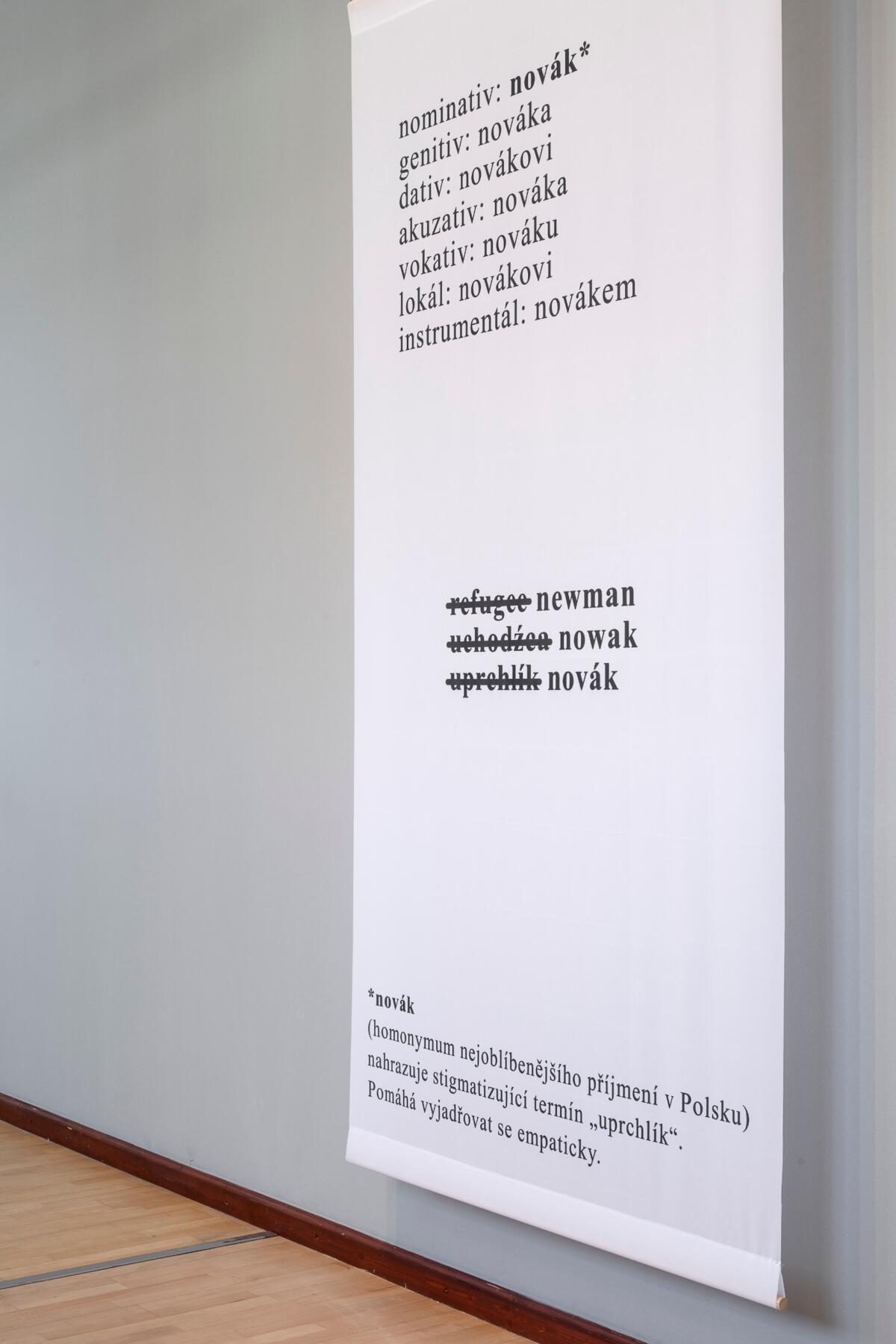
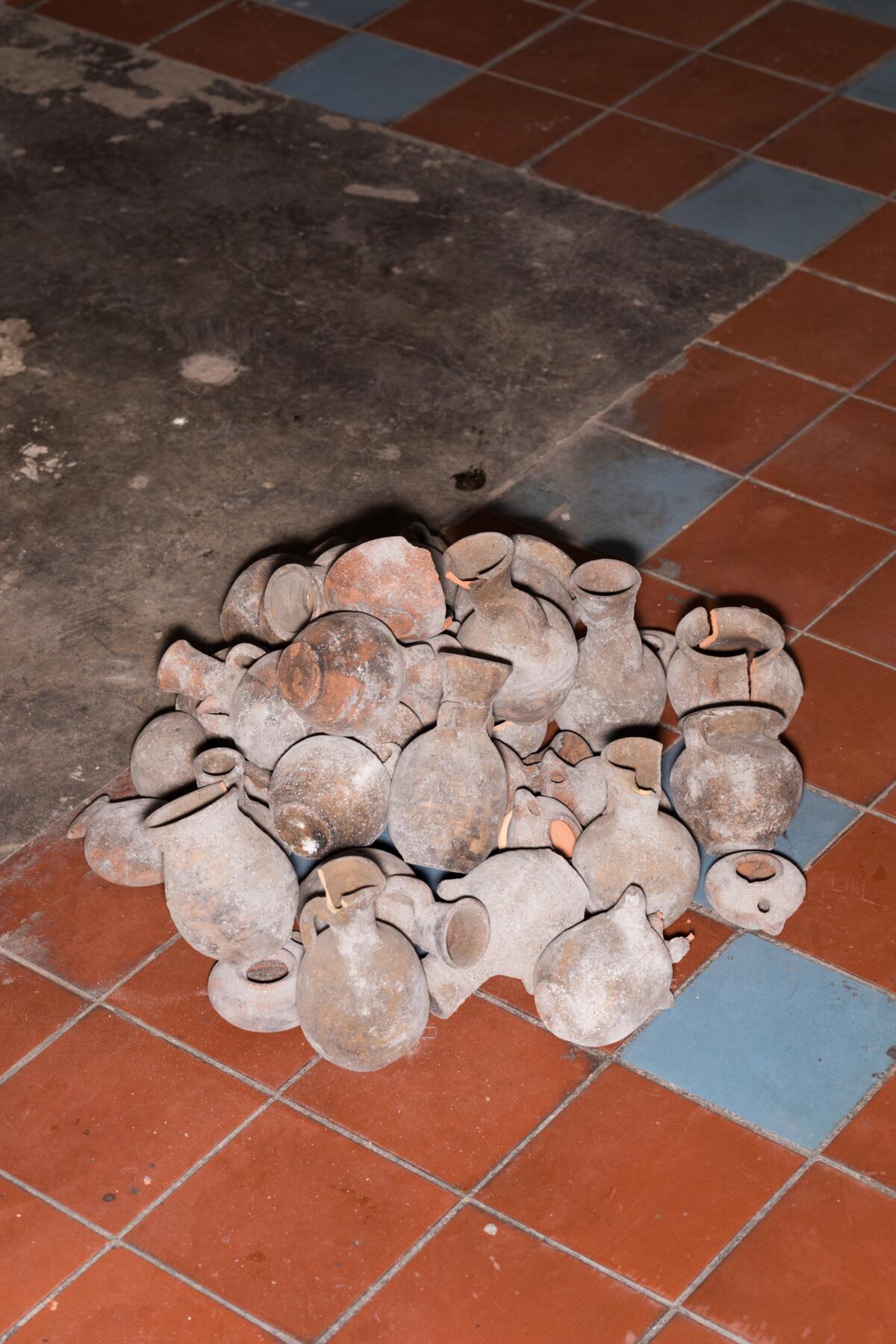
Spelling
To give a name is to cast a spell. To choose the word by which a being is known is to affect its reality. Hanni Kamaly’s sculptures carry the weight of their titles: SAJID (2021-2022), BAIDOO (2017-2022), SON (2017-2022), JORDAD (2018-2022), SELK’NAM (2017), MILES (2017-2022), SABA (2018-2022). Each of these names call the story of the person who has been hurt by racism and xenophobia. Slender metal constructions are precisely assembled and balanced by the artist. Barely standing, yet holding an immense weight, the sculptures are actively negotiating their relationship to the floor, revealing the gravity of their names. In their presence, a visitor is called to watch their step. For Sajid, Baidoo, Son, Jordad, Selk’nam, Miles and Saba, to stay upright is to offer a teaching. A teaching demonstrating that the force pulling bodies towards and away from each other is not determined by their mass but their tenacity to the practice of calling. Their persistence to remain present.
The name being a spell is not a metaphor. Within the judicial context of the national state, names assign places to bodies, grant them rights selectively, and draw lines of ownership. The piece NEWMAN/NEWOMAN/NEWMEN by Belarusian-Polish artist Jana Shostak is a proposal to replace the word refugee, which refers to a legal status, with a neologism “newman/newoman”. The idea is based on the commonality of the Polish surname “Nowak” (translatable as “the new one”)[8]. Etymological interpretation of this word suggests that it was coined by ascribing surnames to “newcomers”. The intention of the work is to challenge the myth of national homogeneity. Nevertheless it alludes strongly to the politics of assimilation and integration, the history of refusal to spell an unfamiliar name.
Some names are to be resisted and contested. The piece titled Looters by Isreali artist Michal Bar-Or is a perverse act of naming resulting in a robbery. The installation consists of three antique vases and three photographs portraying Palestinians captured by the Israeli police while retrieving objects of heritage from their land. Existence of this piece is possible only in a judicial context, in which the salvaged objects are rendered as“un-archeological”, and therefore suitable to be exhibited as contemporary art objects in the city of Prague. They are exhibited alongside the identities of those whose labour of retrieving them was named to be a crime.

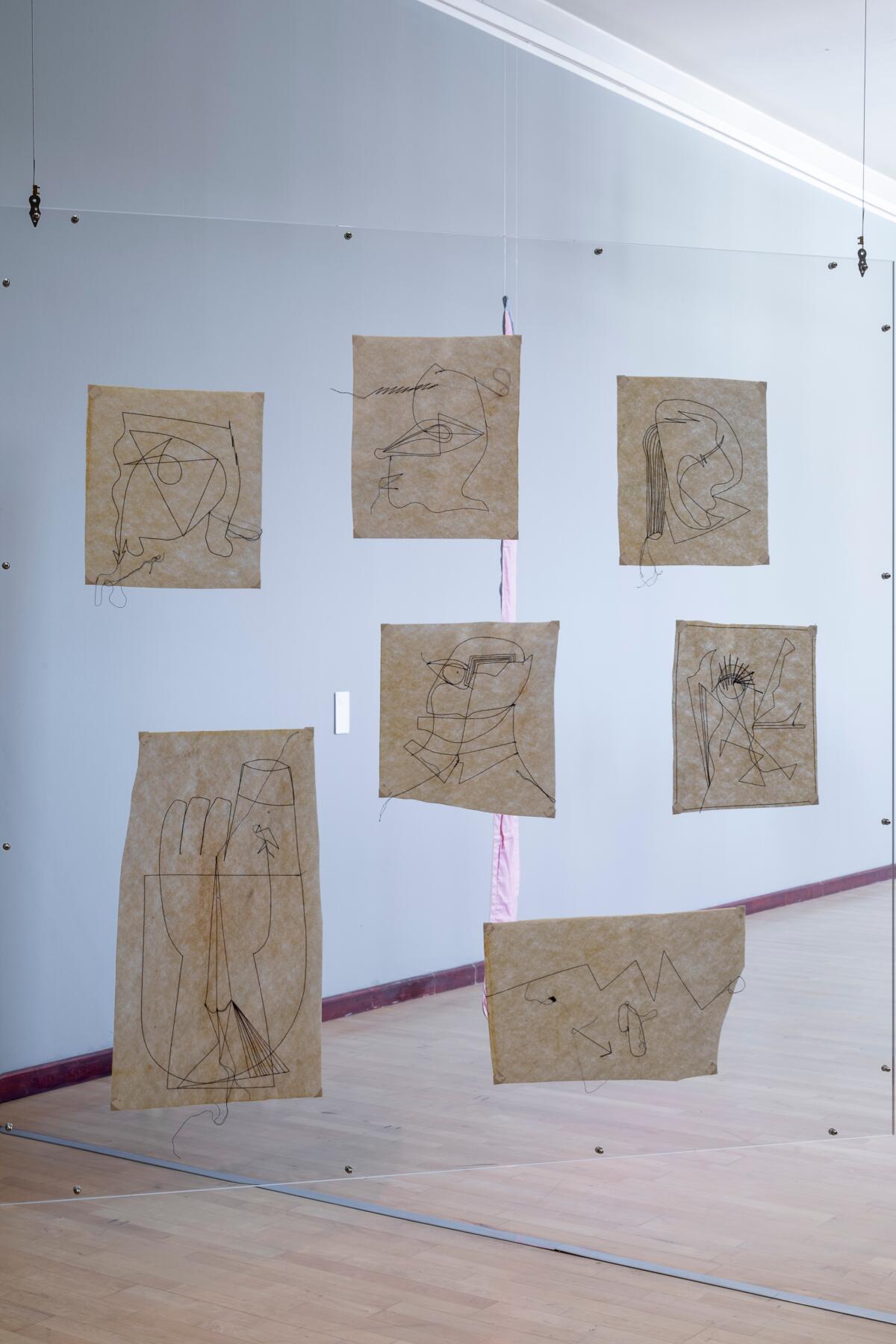
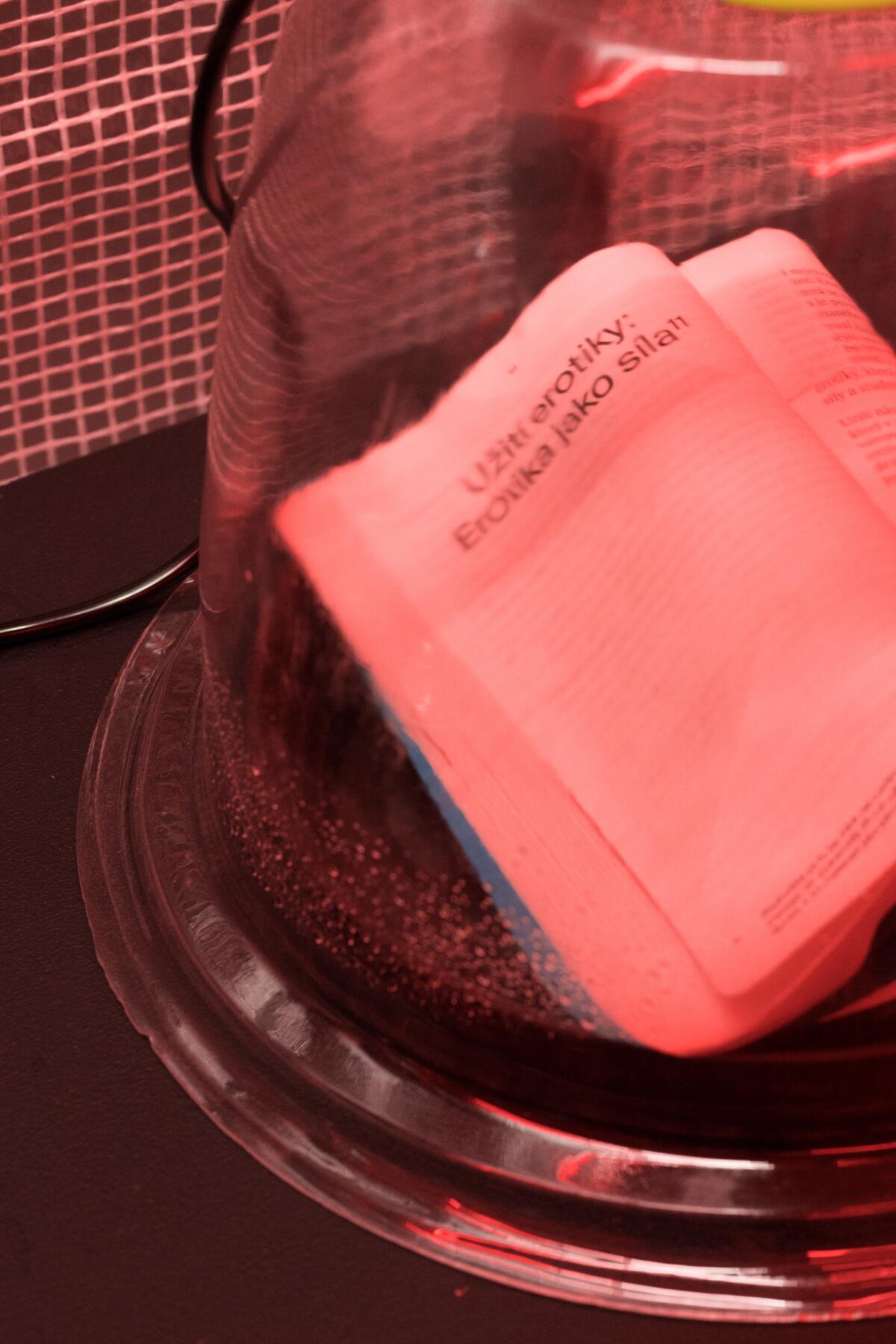
By Way of Conclusion
There is no guarantee in the politics of spelling. There is confusion over its means and its ends. To speak of sorcery is too often to quickly celebrated as a method of abandoning eurocentric positions of strength, rationality, and separation. Nevertheless, the scientific, political economy, geopolitical and other discourses of power are nothing else but methods of casting a mighty spell on the world. It is in the exterior where sacrifices are made[9]. It is in the exterior where the European searches for ethical salvation by casting another spell–the one of forgetfulness. This hex asks for a sacrifice too–and it comes from the ones obliged to remember.
The second edition of the Prague Biennale Matter of Art includes a variety of perspectives, many of them irreconcilable. The exhibition draws lines of displaced matter[10], examines possibilities of living feminist lives[11], brings forth the screams of genocides[12], opens spaces for poetic suspension and fabulation[13]. It evokes feelings of disagreement, incompleteness, and helplessness in front of omnipresent violence. How would it be to search for something other than the colonial history of Europe–its other present and other future? Without forgetting.
What is at stake here is keeping the term decolonial as the name of the struggles lasting for centuries and inscribed in each and every detail of our quotidian realities. As a mode of critique, the decolonial risk of being captured by European sorcery and used to re-trace colonial paths, as in a quest for ethical consciousness. For the path to exist it has to be walked through. Over and over again. To enter the trail beaten by the feet of the dead and to remain unaware of it–one has to be dreaming. A dream of orchids, of diamonds and of coffee. How would it be to wake to the path, to face your guides, to see their color–to decide on your next step?
Edited by Ewa Borysiewicz and Katie Zazenski


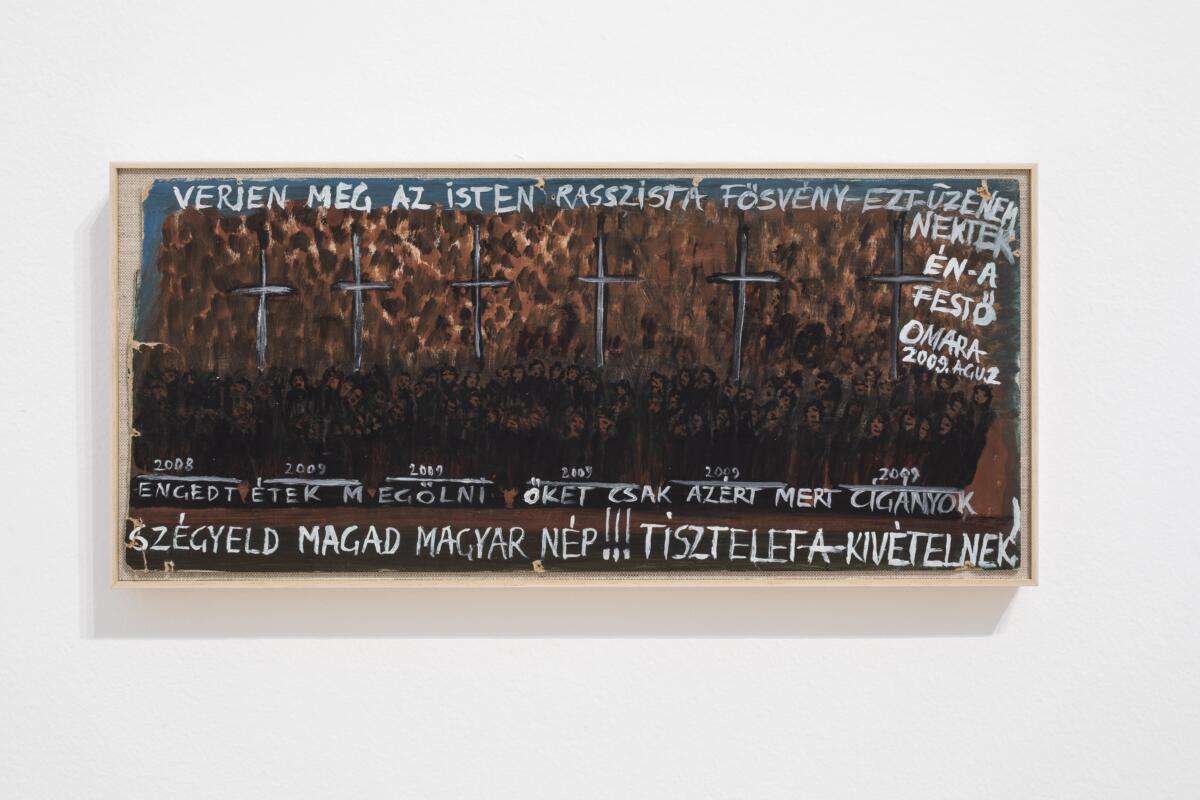
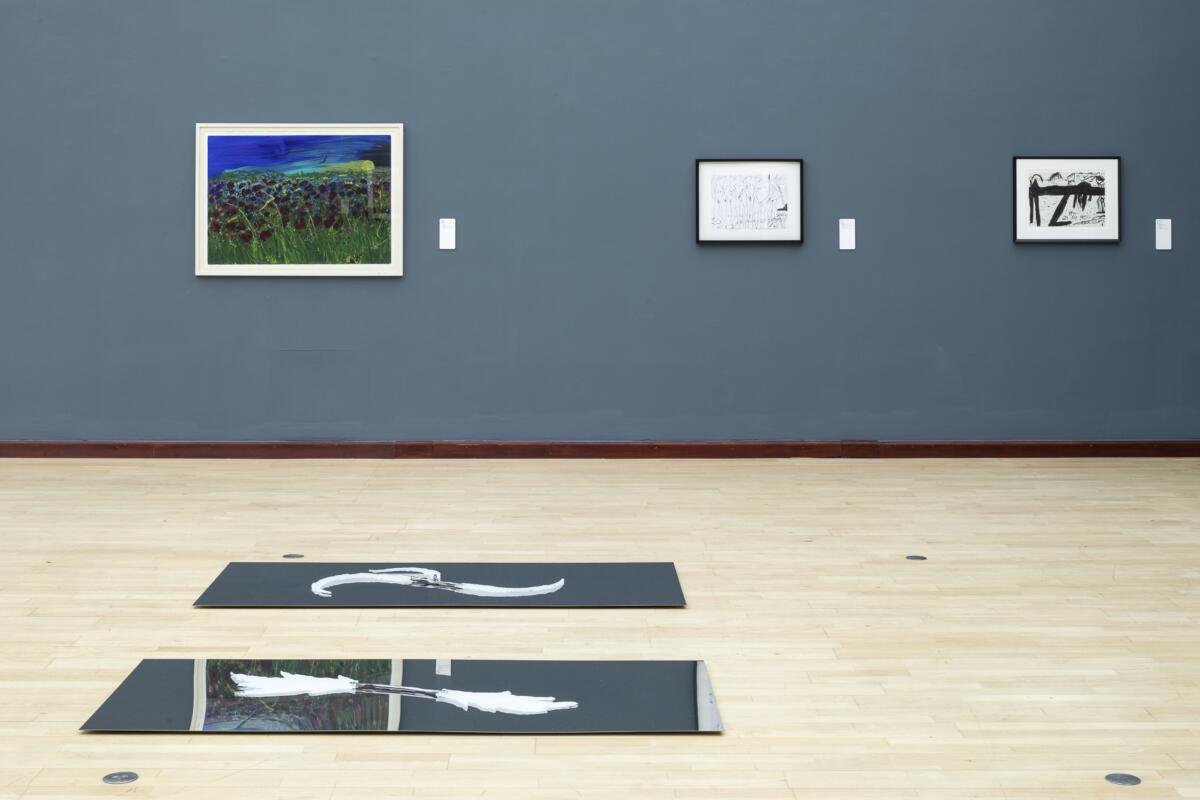
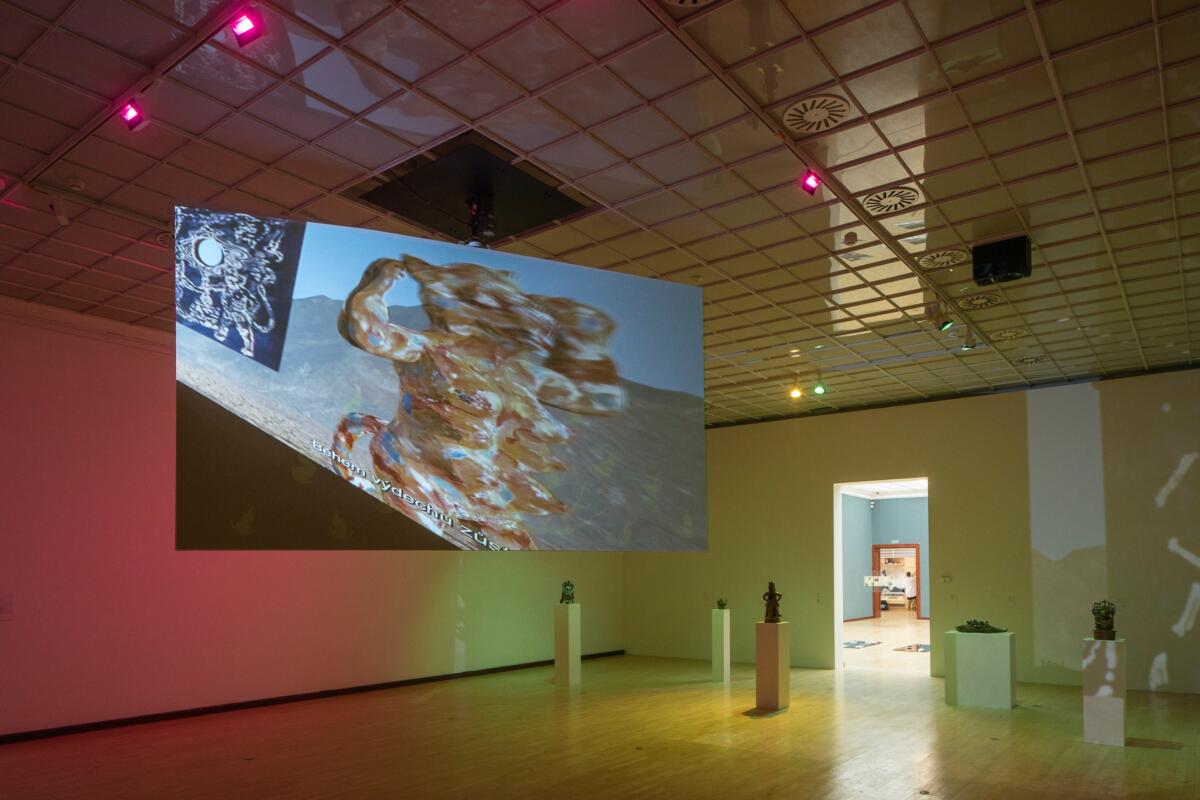

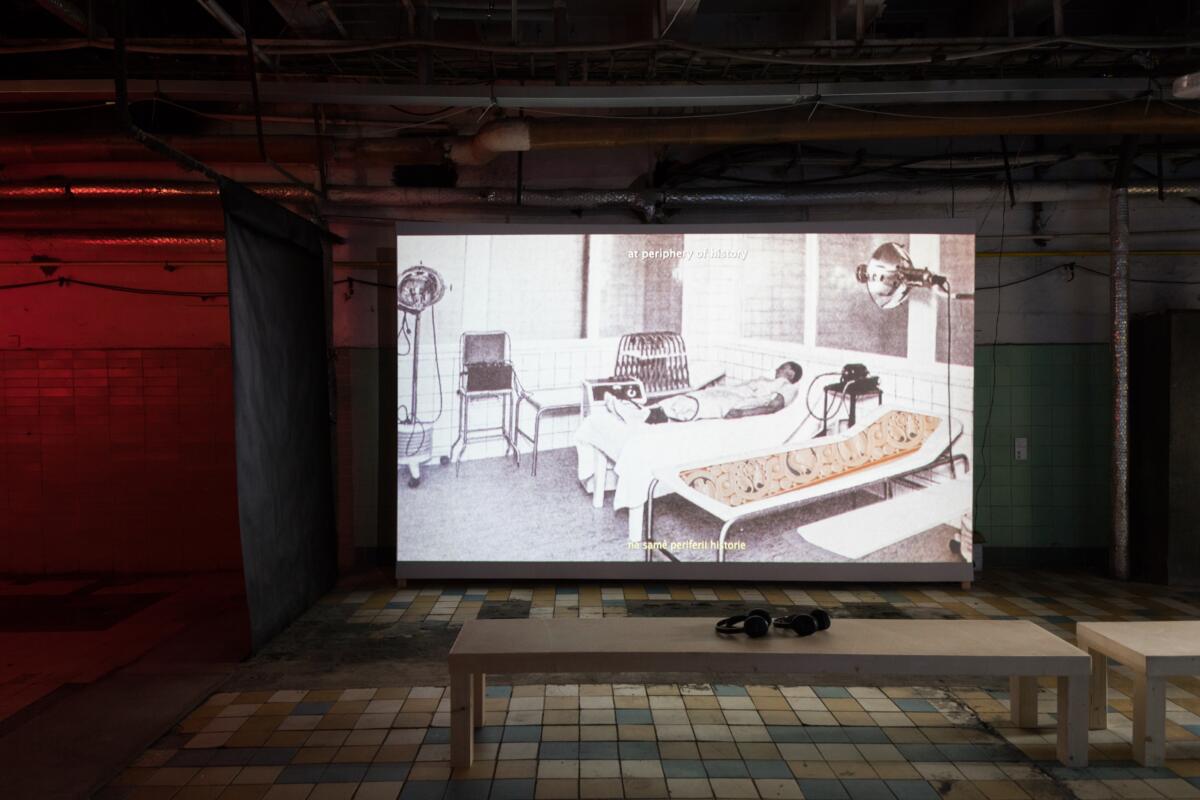
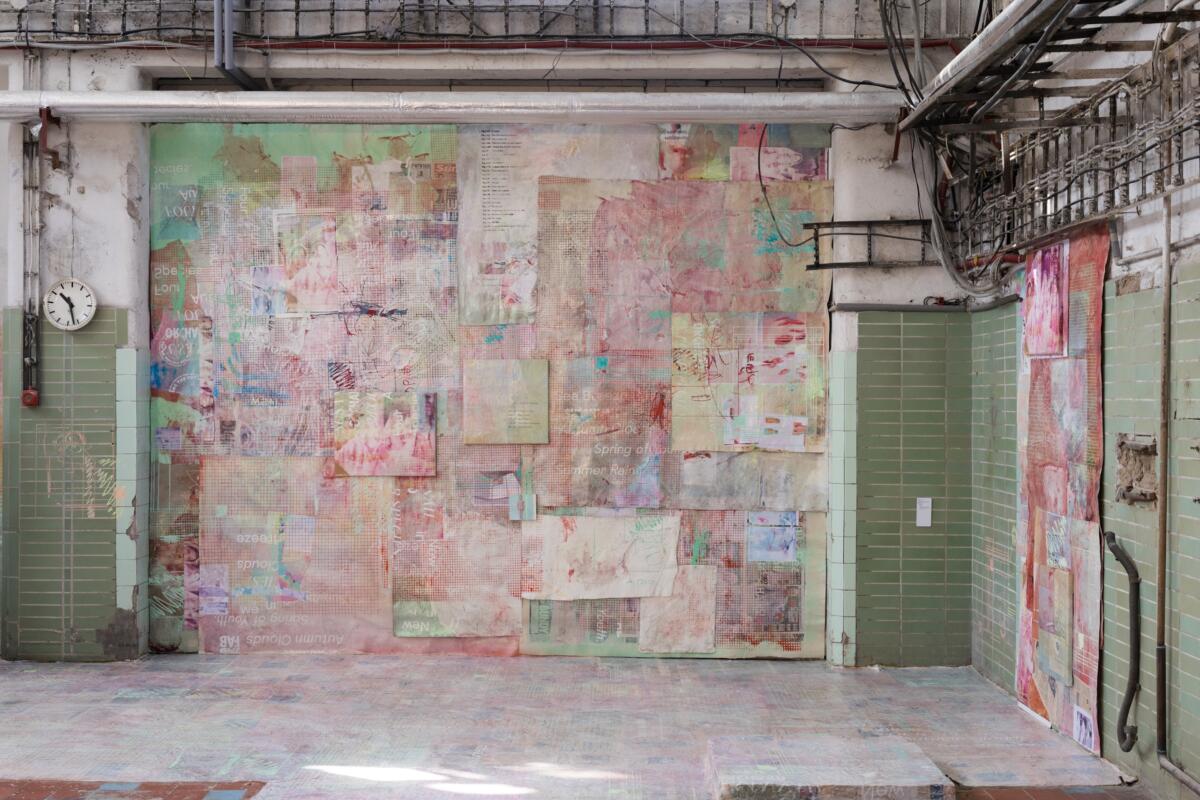
[1]Teshale Tibebu, Hegel and the Third World: The Making of Eurocentrism in World History, 2011, p. xxiv.
[2]Walter Rodney, How Europe Underdeveloped Africa, Verso London | New York, 2018 (first published 1972) p. 28.
[3]The thematic foundation of the planned biennale builds on current discussions about the decolonization of art institutions with an aim to develop them within the Eastern European context. https://cz.tranzit.org/en/project/0/2021-03-11/biennale-matter-of-art-announces-curators-for-2022
[4]The historical discountinuity is already prescribed in Western philosophy of history. G.W.F. Hegel wrote: “Sclaves have to some extent been drawn within the sphere of Occidental Reason. Yet this entire body of peoples remains excluded from our consideration, because hitherto it has not appeared as an independent element in the series of phases that Reason has assumed in the World.” See G.W.F. Hegel, The Philosophy of History”, trans. Joseph Sibree. (New York: Dover) 1956, 350. Engels referring to Southern Slavs: “Peoples which have never had a history of their own, which from the time when they achieved the first, most elementary stage of civilization came under foreign sway, or which were forced to attain the first stage of civilization only by means of a foreign yoke, are not viable and will never be able to achieve any kind of independence.” See Frederick Engels and Karl Marx “Democratic Pan-Slavism” in Collected Works of Karl Marx and Friedrich Engels, 1848-49, Vol. 8. (New York: International Publishers, 1977), 362-378. Theodor Adorno made a peculiar statement: “Hitler attempted to eradicate bolshevism, whereas it was his own war that brought the giant shadow of the Slavic world down on Europe—that same Slavic world of which Hegel had already made the ominous statement that it had not yet entered history.” See Theodor Adorno Hegel: Three Studies, trans. Shierry Weber Nicholson (Cambridge Mass. MIT Press, 1993), 10.
[5]compare: Aime Césaire. “Discourse on Colonialism.” Translated by Joan Pinkham. New York and London: Monthly Review Press, 1972. | DuBois, W.E.B. “The Negro and the Warsaw Ghetto.” Raisons Politiques 21, no. 1, (2006): 131-135.
[6] see: “PERVERSE DECOLONIZATION?” Edited by Ekaterina Degot, David Riff, Jan Sowa, Archive Books, Akademie der Kunste der Welt, Archive Books 2021.
[7]Aleister Crowley, Magick in Theory and Practice, Martino Fine Books 2011 (first published 1929).
[8]“Novak” is also the most common surname in Czech Republic and common surname in other countries such as Slovakia, Slovenia. It is common also in Croatia, Serbia and Montenegro.
[9] For the discussion of the notions of exteriority and interiority as spatio-temporal signifiers in European philsophy, which creates conditions for racial violence without ethical crisis of the subject see Denise Ferreira Da Silva. Toward a Global Idea of Race. Minneapolis: University of Minnesota Press, 2007.
[10]artoworks by APART Collective, Anca Benera & Arnold Estefán, Rudolf Samohejl, Hera Büyüktaşcıyan, Hera Büyüktaşcıyan
[11]artworks by Marie Tučková, Sráč Sam, Alina Kleytman & Marie Lukáčová
[12]artworks by OMARA – Mara Oláh, Ceija Stojka, Charlotte Salomon
[13]besides of mentioned artworks: Linh Valerie Pham with Ha Thuy Hang, Sina Seifee, Tarek Lakhrissi, Lenka Vítková, Nolan Oswald Dennis, Larisa Crunțeanu, Candice Lin
